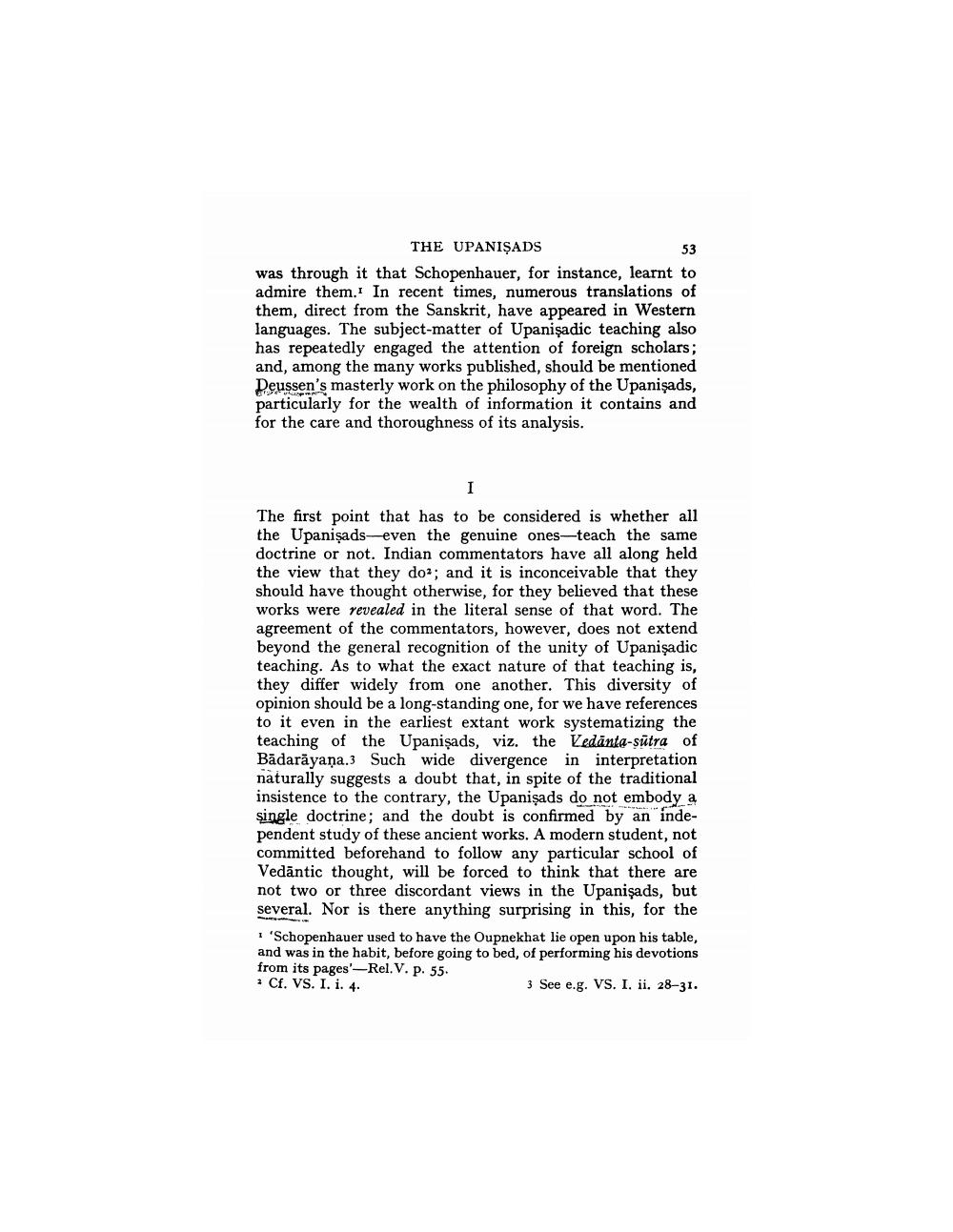________________
THE UPANISADS was through it that Schopenhauer, for instance, learnt to admire them. In recent times, numerous translations of them, direct from the Sanskrit, have appeared in Western languages. The subject-matter of Upanişadic teaching also has repeatedly engaged the attention of foreign scholars; and, among the many works published, should be mentioned Deussen's masterly work on the philosophy of the Upanişads, particularly for the wealth of information it contains and for the care and thoroughness of its analysis.
The first point that has to be considered is whether all the Upanişads--even the genuine ones-teach the same doctrine or not. Indian commentators have all along held the view that they do?; and it is inconceivable that they should have thought otherwise, for they believed that these works were revealed in the literal sense of that word. The agreement of the commentators, however, does not extend beyond the general recognition of the unity of Upanişadic teaching. As to what the exact nature of that teaching is, they differ widely from one another. This diversity of opinion should be a long-standing one, for we have references to it even in the earliest extant work systematizing the teaching of the Upanişads, viz. the Vedanta-sutra of Bādarāyaṇa.3 Such wide divergence in interpretation naturally suggests a doubt that, in spite of the traditional insistence to the contrary, the Upanişads do not embody a single doctrine; and the doubt is confirmed by an independent study of these ancient works. A modern student, not committed beforehand to follow any particular school of Vedāntic thought, will be forced to think that there are not two or three discordant views in the Upanişads, but several. Nor is there anything surprising in this, for the
'Schopenhauer used to have the Oupnekhat lie open upon his table, and was in the habit, before going to bed, of performing his devotions from its pages-Rel. V. p. 55. 1 Cf. VS. I. i. 4.
3 See e.g. VS. I. ii. 28-31.




